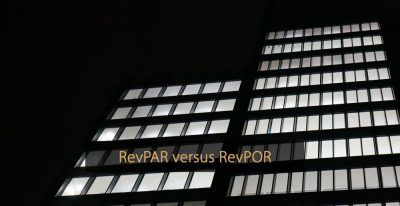Autocorrelation Wikipedia

A lag 1 autocorrelation measures the correlation between the observations that are a one-time gap apart. For example, to learn the correlation between the temperatures of one day and the corresponding day in the next month, a lag 30 autocorrelation should be used (assuming 30 days in that month). It is quite possible that both $Y$ and $X$ are non-stationary and therefore, the error $u$ is also non-stationary. In other words, the occurrence of one tells nothing about the occurrence of the other. Autocorrelation is problematic for most statistical tests because it refers to the lack of independence between values. Autocorrelation can help determine if there is a momentum factor at play with a given stock.
- By plotting the observations with a regression line, it shows that a positive error will be followed by a negative one and vice versa.
- That’s a pretty low standard deviation and would imply that extreme events such as hyperinflation are virtually impossible.
- Autocorrelation is the correlation of a time series and its lagged version over time.
- Autocorrelation, sometimes known as serial correlation in the discrete time case, is the correlation of a signal with a delayed copy of itself as a function of delay.
The concept of autocorrelation is most often discussed in the context of time series data in which observations occur at different points in time (e.g., air temperature measured on different days of the month). For example, one might expect the air temperature on the 1st day of the month to be more similar to the temperature on the 2nd day compared to the 31st day. If the temperature values that occurred closer together in time are, in fact, more similar than the temperature values that occurred farther apart in time, the data would be autocorrelated.
Earthquakes (autoregression model)
You may find that an AR(1) or AR(2) model is appropriate for modeling blood pressure. However, the PACF may indicate a large partial autocorrelation value at a lag of 17, but such a large order for an autoregressive model likely does not make much sense. When autocorrelated error terms are found to be present, then one of the first remedial measures should be to investigate the omission of a key predictor variable.
Correlations and Timeliness of COVID-19 Surveillance Data … – CDC
Correlations and Timeliness of COVID-19 Surveillance Data ….
Posted: Fri, 12 May 2023 07:00:00 GMT [source]
Statistical software such as SPSS may include the option of running the Durbin-Watson test when conducting a regression analysis. The Durbin-Watson tests produces a test statistic that ranges from 0 to 4. Values close to 2 (the middle of the range) suggest less autocorrelation, and values closer to 0 or 4 indicate greater positive or negative autocorrelation respectively. If the price of a stock with strong positive autocorrelation has been increasing for several days, the analyst can reasonably estimate the future price will continue to move upward in the recent future days. The analyst may buy and hold the stock for a short period of time to profit from the upward price movement. For example, in time-series regression involving quarterly data, such data are usually derived from the monthly data by simply adding three monthly observations and dividing the sum by 3.
Finding and Fixing Autocorrelation
If such a predictor does not aid in reducing/eliminating autocorrelation of the error terms, then certain transformations on the variables can be performed. Methods for dealing with errors from an AR(k) process do exist in the literature but are much more technical in nature. Autocorrelation refers to the degree of correlation between the values of the same variables across different observations in the data.
- Autocorrelation and partial autocorrelation coefficients for GDP show that only first and second order coefficients are significantly different from zero.
- The temperature the next day tends to rise when it’s been increasing and tends to drop when it’s been decreasing during the previous days.
- These include carryover effect, where effects from a prior test or event affect results.
- In particular, it is possible to have serial dependence but no (linear) correlation.
The last term V, is a so called a white noise error term, and suppose to be completely random. Autocorrelation, sometimes known as serial correlation in the discrete time case, is the correlation of a signal with a delayed copy of itself as a function of delay. Informally, it is the similarity between observations of a random variable as a function of the time lag between them.
Autocorrelation in Technical Analysis
In particular, it is possible to have serial dependence but no (linear) correlation. Here we notice that there is a significant spike at a lag of 1 and much lower spikes for the subsequent lags. As an example, we could think of a random sample of individuals taken from a population to analyze their earnings. To causes of autocorrelation find a correlation between two randomly chosen individuals in this sample is not very likely. Let NWf and NΔf denote the numbers of nonzero Walsh-Hadamard coefficients and autocorrelation coefficients of f, respectively. Thus, the above formulae (2.20) and (2.21) are also true if we replace Cf(a) with Cz(a).
Glial dysregulation in the human brain in fragile X-associated tremor … – pnas.org
Glial dysregulation in the human brain in fragile X-associated tremor ….
Posted: Tue, 30 May 2023 18:47:35 GMT [source]
Auto correlation is a characteristic of data which shows the degree of similarity between the values of the same variables over successive time intervals. This post explains what autocorrelation is, types of autocorrelation – positive and negative autocorrelation, as well as how to diagnose and test for auto correlation. This section provides a few more advanced techniques used in time series analysis. While they are more peripheral to the autoregressive error structures that we have discussed, they are germane to this lesson since these models are constructed in a regression framework.
Definition for wide-sense stationary stochastic process
However, autocorrelation can also occur in cross-sectional data when the observations are related in some other way. In a survey, for instance, one might expect people from nearby geographic locations to provide more similar answers to each other than people who are more geographically distant. Similarly, students from the same class might perform more similarly to each other than students from different classes. Thus, autocorrelation can occur if observations are dependent in aspects other than time.

If the assumption is invalid, autocorrelated residuals may be a consequence of model misspecification, rather than autocorrelated errors. As is well known, inferences concerning OLS estimates of the parameters of this model are problematic if the stochastic errors, εt, are correlated [i.e., cov(εt, εt − 1) ≠ 0]. When errors are correlated, parameter estimates are unbiased, but standard errors are affected. Hence, t ratios (i.e., β/s.e.) are inflated or deflated (depending on the sign of the correlation) and the risk of making Type I or Type II errors is enhanced.
